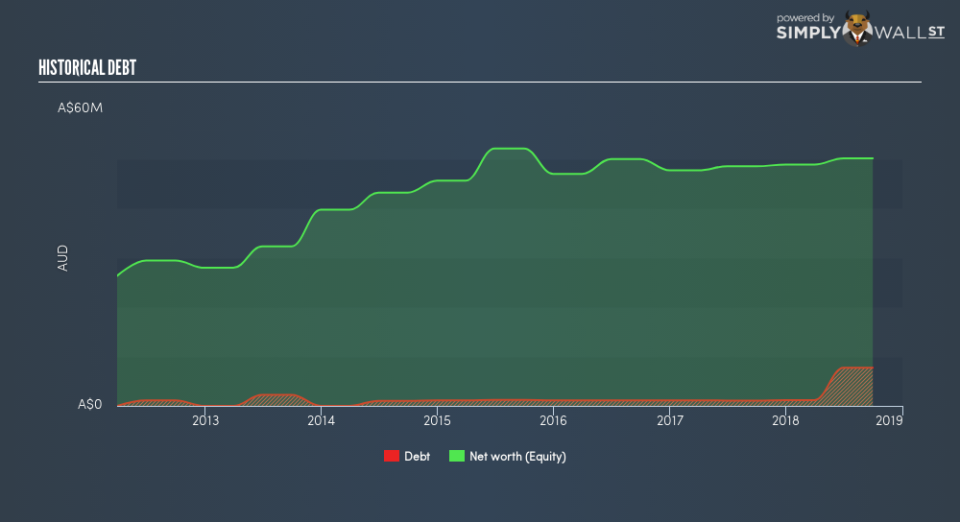How Financially Strong Is Merchant House International Limited (ASX:MHI)?

Want to participate in a short research study? Help shape the future of investing tools and you could win a $250 gift card!
Merchant House International Limited (ASX:MHI) is a small-cap stock with a market capitalization of AU$11m. While investors primarily focus on the growth potential and competitive landscape of the small-cap companies, they end up ignoring a key aspect, which could be the biggest threat to its existence: its financial health. Why is it important? Given that MHI is not presently profitable, it’s essential to assess the current state of its operations and pathway to profitability. I believe these basic checks tell most of the story you need to know. Nevertheless, I know these factors are very high-level, so I recommend you dig deeper yourself into MHI here.
Does MHI produce enough cash relative to debt?
Over the past year, MHI has ramped up its debt from AU$1.1m to AU$7.7m , which includes long-term debt. With this rise in debt, MHI’s cash and short-term investments stands at AU$5.6m , ready to deploy into the business. Moreover, MHI has produced AU$306k in operating cash flow during the same period of time, leading to an operating cash to total debt ratio of 4.0%, signalling that MHI’s debt is not appropriately covered by operating cash. This ratio can also be a sign of operational efficiency for loss making businesses as traditional metrics such as return on asset (ROA) requires a positive net income. In MHI’s case, it is able to generate 0.04x cash from its debt capital.
Does MHI’s liquid assets cover its short-term commitments?
With current liabilities at AU$15m, the company has been able to meet these obligations given the level of current assets of AU$40m, with a current ratio of 2.76x. For Luxury companies, this ratio is within a sensible range since there’s a sufficient cash cushion without leaving too much capital idle or in low-earning investments.
Does MHI face the risk of succumbing to its debt-load?
With debt at 15% of equity, MHI may be thought of as appropriately levered. MHI is not taking on too much debt commitment, which can be restrictive and risky for equity-holders. Risk around debt is very low for MHI, and the company also has the ability and headroom to increase debt if needed going forward.
Next Steps:
MHI has demonstrated its ability to generate sufficient levels of cash flow, while its debt hovers at a safe level. In addition to this, the company exhibits an ability to meet its near term obligations should an adverse event occur. This is only a rough assessment of financial health, and I’m sure MHI has company-specific issues impacting its capital structure decisions. You should continue to research Merchant House International to get a better picture of the stock by looking at:
Future Outlook: What are well-informed industry analysts predicting for MHI’s future growth? Take a look at our free research report of analyst consensus for MHI’s outlook.
Historical Performance: What has MHI’s returns been like over the past? Go into more detail in the past track record analysis and take a look at the free visual representations of our analysis for more clarity.
Other High-Performing Stocks: Are there other stocks that provide better prospects with proven track records? Explore our free list of these great stocks here.
To help readers see past the short term volatility of the financial market, we aim to bring you a long-term focused research analysis purely driven by fundamental data. Note that our analysis does not factor in the latest price-sensitive company announcements.
The author is an independent contributor and at the time of publication had no position in the stocks mentioned. For errors that warrant correction please contact the editor at editorial-team@simplywallst.com.

